Parents often find themselves in a dilemma when their baby too big for bassinet but not ready for crib. This can be a challenging time as parents want to ensure their baby’s safety while also providing a comfortable sleeping environment. Understanding the transition from a bassinet to a crib and the milestones that indicate a baby’s readiness can help parents make an informed decision.
Bassinets are a popular choice for newborns as they provide a cozy and secure sleeping space. However, as babies grow and become more active, they may outgrow the bassinet before they are ready for a crib. This can be a difficult time for parents as they navigate the transition to a larger sleeping space. It is important to understand the differences between a bassinet and a crib and how they may affect a baby’s sleep.
Key Takeaways
- Understanding the differences between a bassinet and a crib can help parents make an informed decision when transitioning their baby.
- Baby milestones such as rolling over and sitting up can indicate when a baby is ready for a crib.
- Ensuring safety in the transition and creating an ideal sleeping environment are important factors to consider.
Understanding the Bassinet and Crib
When it comes to providing a safe and comfortable sleeping environment for a newborn, parents have a few options to choose from. Two of the most popular choices are bassinets and cribs. Both of these options have their own unique benefits and drawbacks. In this section, we will explore the differences between a bassinet and a crib to help parents make an informed decision.
Bassinet
A bassinet is a small, portable bed that is designed for newborns. It is typically used for the first few months of a baby’s life. Bassinets are usually made of lightweight materials and are easy to move around the house. They are also designed to be placed next to the parents’ bed, which makes it convenient for nighttime feedings and comforting.
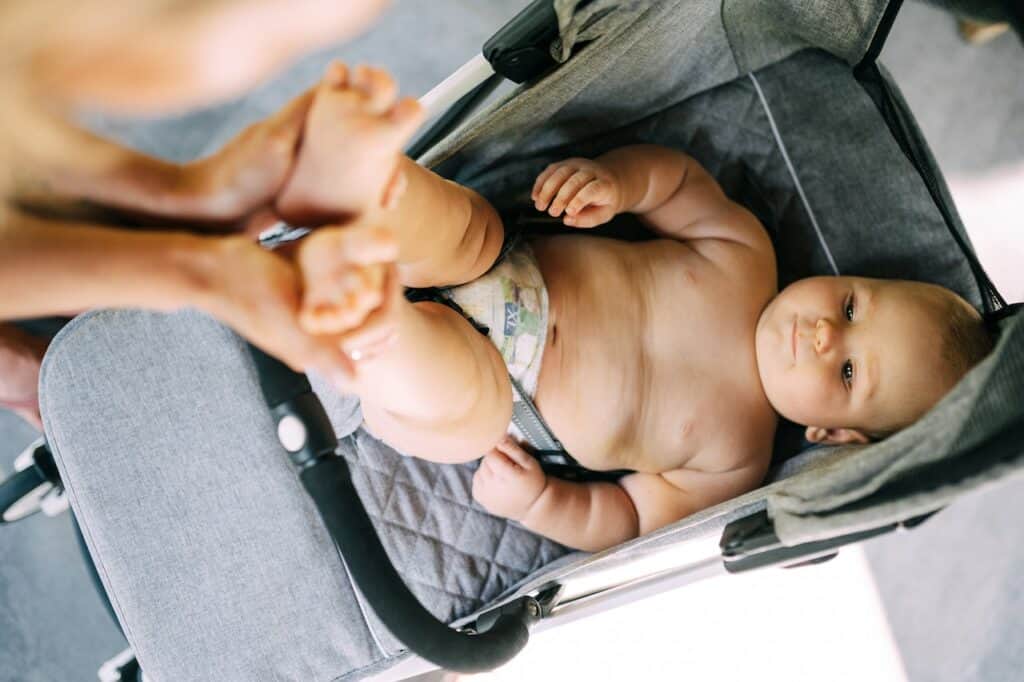
However, bassinets do have their limitations. They are only suitable for newborns and have a weight limit of around 15-20 pounds. This means that once a baby reaches this weight, they will need to be moved to a full-size crib. Additionally, bassinets have a limited lifespan and can only be used for a few months before the baby outgrows it.
When using a bassinet, it’s important to ensure that the mattress is firm and fits snugly. This will help prevent suffocation and Sudden Infant Death Syndrome (SIDS).
Crib
A full-size crib is a larger and more permanent sleeping option for babies. It is designed to be used from birth until the child is ready for a toddler bed. Cribs are usually made of sturdy materials and are built to last. They also have a higher weight limit, which means that a baby can use it for a longer period of time.
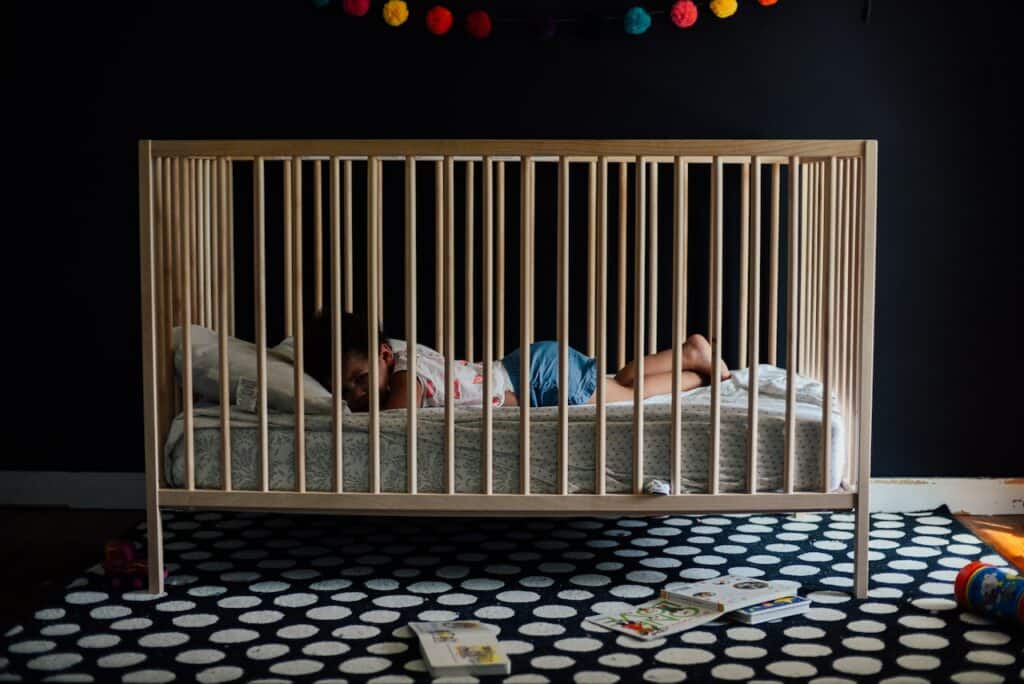
One of the biggest benefits of a crib is that it provides a safe and secure sleeping environment for babies. Cribs are designed to meet safety standards and regulations, which means that parents can rest easy knowing that their child is sleeping in a safe environment.
However, cribs can be expensive and take up a lot of space in a room. They are also not as portable as a bassinet, which can make it difficult to move around the house.
In conclusion, both bassinets and cribs have their own unique benefits and drawbacks. Parents should consider their lifestyle, budget, and the needs of their child when deciding which option to choose. It’s important to ensure that whichever option is chosen, it provides a safe and comfortable sleeping environment for the baby.
Baby Milestones and Readiness for Crib
As babies grow and develop, they reach various milestones that indicate their readiness for certain activities. One such milestone is the ability to roll over, which typically occurs around 4-6 months of age. This is an important milestone because it indicates that the baby has developed enough strength and coordination to move their body in new ways.
Another important milestone is the ability to sit up independently, which typically occurs around 6-8 months of age. This is an exciting milestone for both the baby and their parents because it allows the baby to explore their environment from a new perspective.
When it comes to readiness for a crib, these milestones are important because they indicate that the baby has developed enough physical abilities to safely sleep in a crib. For example, if a baby is rolling over frequently, they may be at risk of rolling out of a bassinet and onto the floor. Similarly, if a baby is unable to sit up independently, they may not be able to support their head and neck properly while sleeping in a crib.
Overall, it is important for parents to be aware of their baby’s movement milestones and to use them as a guide for determining when their baby is ready for a crib. While every baby develops at their own pace, reaching these milestones is a good indication that the baby is ready for the next step in their sleeping arrangement.
Ensuring Safety in the Transition
When a baby outgrows their bassinet but is not yet ready for a crib, parents may find themselves wondering how to ensure their little one’s safety during the transition. Here are some tips to help make the move as safe as possible:
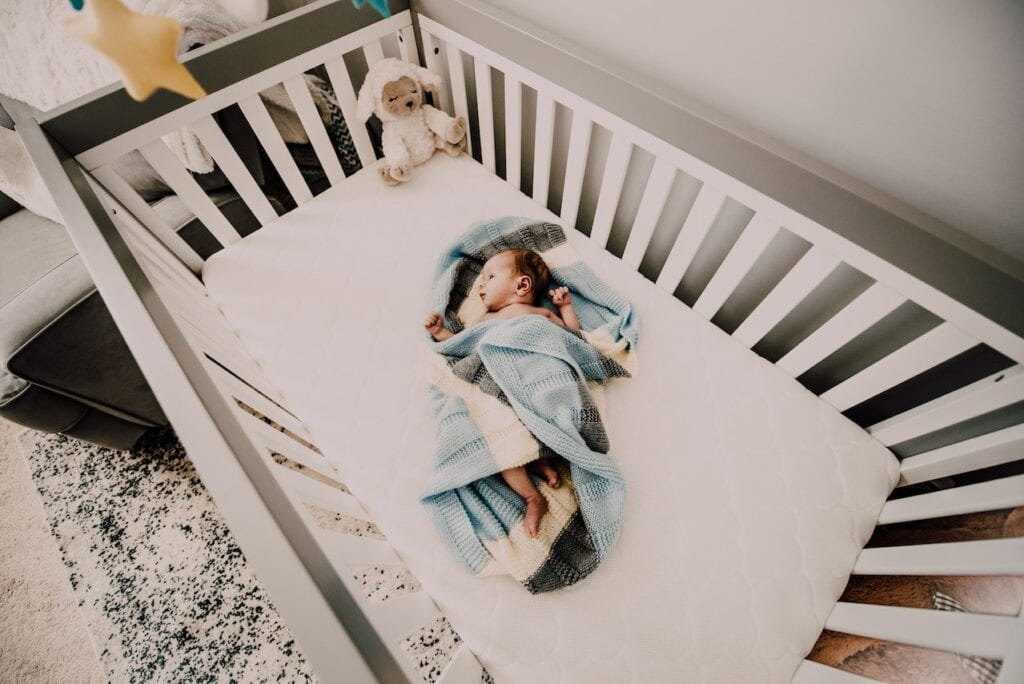
1. Choose a Safe Sleeping Space
When transitioning from a bassinet to a larger sleeping space, it’s important to choose a safe sleeping space that meets the American Academy of Pediatrics’ safe sleep guidelines. This means selecting a firm, flat surface with no soft objects or loose bedding that could pose a suffocation risk. A crib or play yard with a firm mattress and fitted sheet is a good option.
2. Consider a Safe Sleep Product
If a crib or play yard is not an option, parents may consider a safe sleep product designed for babies who have outgrown their bassinet but are not yet ready for a crib. These products, such as a mini crib or a bedside sleeper, are designed to provide a safe sleeping space for babies up to 15 pounds.
3. Monitor Baby’s Sleeping
Parents should continue to monitor their baby’s sleeping, even after the transition to a larger sleeping space. A baby monitor can help parents keep an ear out for any signs of distress or discomfort. It’s important to follow the manufacturer’s instructions for use and placement to ensure the monitor is effective and safe.
4. Ensure a Safe Space
Parents should ensure the sleeping space is free of any hazards that could pose a risk to their baby, such as cords, loose blankets, or toys. It’s also important to ensure the sleeping space is away from any potential hazards, such as windows or heaters.
5. Prevent Roll Over
As babies get older and more mobile, there is a risk of them rolling over in their sleep. To prevent this, parents can place their baby on their back to sleep and avoid using any sleep positioners or wedges that could increase the risk of suffocation.
6. Follow Safe Sleep Guidelines
Finally, parents should continue to follow safe sleep guidelines, including placing their baby on their back to sleep, avoiding soft objects and loose bedding, and ensuring a safe sleeping environment. By following these guidelines, parents can help reduce the risk of sudden infant death syndrome (SIDS) and other sleep-related accidents.
Creating an Ideal Sleeping Environment
When a baby outgrows a bassinet but isn’t quite ready for a crib, it’s important to create an ideal sleeping environment that is safe and comfortable. Here are some tips for creating the perfect sleeping space for your little one:
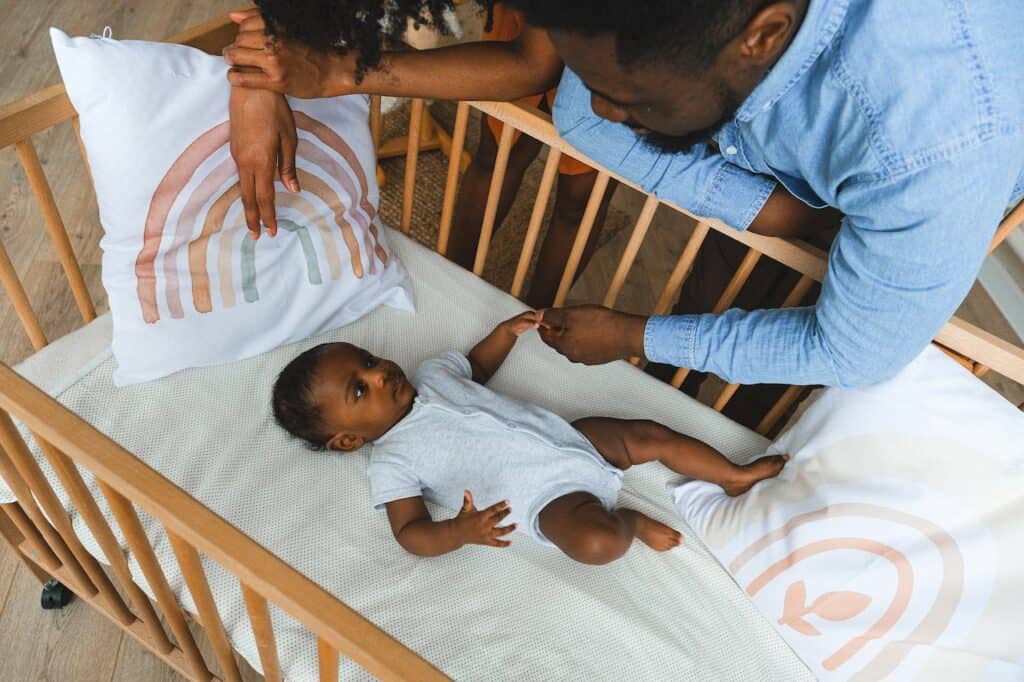
1. Nursery or Own Room
If your baby has their own room, it’s important to make sure that it is a safe and comfortable environment for them to sleep in. Ensure that the room is well-ventilated and at a comfortable temperature, as babies can be sensitive to changes in temperature. Keep the room free from clutter and ensure that any furniture is securely anchored to the wall to prevent tipping.
2. Sleeping Space
When it comes to your baby’s sleeping space, there are a few options to consider. A mini crib is a great option for babies who have outgrown their bassinet but aren’t quite ready for a full-sized crib. Alternatively, you can use a play yard with a bassinet attachment. Whichever option you choose, make sure that the sleeping space is firm and flat, with no loose bedding or soft objects that could pose a suffocation risk.
3. Same Room or Room Sharing
If your baby will be sleeping in the same room as you, it’s important to make sure that they have their own safe sleeping space. You can use a mini crib or play yard with a bassinet attachment, or a separate bassinet. Make sure that the sleeping space is placed in a location that is away from any hazards, such as cords or curtains.
4. Sleeping Arrangement
Regardless of whether your baby is sleeping in their own room or sharing a room with you, it’s important to establish a safe sleeping arrangement. Always place your baby on their back to sleep, and avoid using any loose bedding or soft objects in the sleeping space. Dress your baby appropriately for the temperature, and use a sleep sack or swaddle to keep them warm.
5. Cold
If the room is cold, dress your baby in warm, breathable layers and consider using a sleep sack or swaddle to keep them warm. Avoid using blankets or loose bedding, as these can pose a suffocation risk.
By following these tips, you can create an ideal sleeping environment for your baby that is safe, comfortable, and conducive to a good night’s sleep.
Understanding Sleep Habits and Routines
When a baby outgrows their bassinet but isn’t quite ready for a crib, it can be challenging for parents to establish a comfortable sleep routine. Understanding sleep habits and routines is crucial to ensuring your baby gets the rest they need.
One of the most important things to consider is establishing a consistent bedtime routine. This can include a bath, a story, and a lullaby before tucking them in for the night. By creating a routine, you are signaling to your baby that it’s time to wind down and get ready for sleep.
Naps are also an essential part of a baby’s sleep routine. Depending on their age, babies may need anywhere from two to four naps a day. It’s important to pay attention to your baby’s cues and establish a nap schedule that works for them.
Sleep training can also be helpful when transitioning your baby from a bassinet to a crib. There are various methods of sleep training, so it’s important to find one that works for you and your baby. Some parents opt for the “cry it out” method, while others prefer a more gradual approach.
Understanding your baby’s sleep cycle is also crucial in establishing good sleep habits. Babies have shorter sleep cycles than adults, so they may wake up more frequently during the night. However, as they get older, their sleep cycles will lengthen, and they’ll be able to sleep for longer stretches at a time.
Lastly, it’s important to pay attention to your baby’s restless behaviors during sleep. If they’re constantly tossing and turning, it could be a sign that they’re uncomfortable in their current sleeping arrangement. Adjusting their sleep environment, such as adding a firmer mattress or using a sleep sack, may help alleviate any discomfort.
Overall, understanding your baby’s sleep habits and routines is crucial in ensuring they get the rest they need. By establishing a consistent bedtime routine, paying attention to their nap schedule, and being mindful of their sleep environment, you can help your baby transition from a bassinet to a crib with ease.
Health Considerations in the Transition
When transitioning a baby from a bassinet to a crib, it’s important to consider health factors. Newborns are particularly vulnerable to Sudden Infant Death Syndrome (SIDS), so it’s essential to ensure that the baby’s sleeping environment is safe and secure.
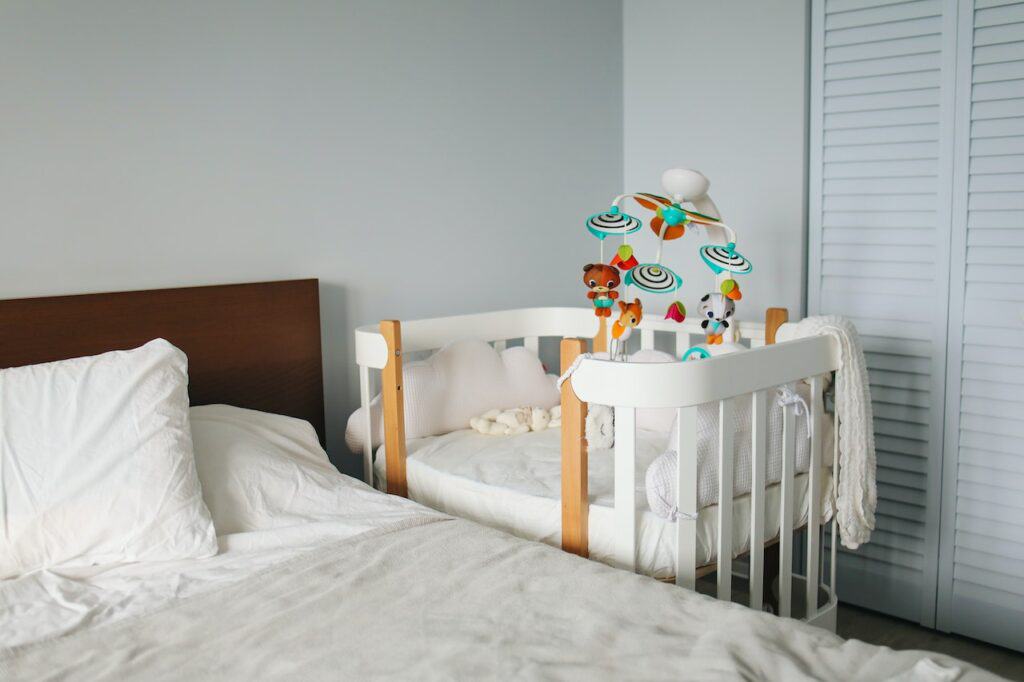
Pediatricians recommend that newborns sleep on their backs to reduce the risk of SIDS. When transitioning to a crib, parents should make sure that the mattress is firm and fits snugly in the crib. Soft bedding, such as pillows, blankets, and bumper pads, should be avoided as they increase the risk of suffocation.
Additionally, parents should ensure that the crib is free of any hazards, such as loose or broken parts, and that it meets safety standards. It’s also important to keep the crib away from any cords or strings that could pose a choking hazard.
Overall, parents should consult with their pediatrician when transitioning their baby from a bassinet to a crib. They can provide guidance on safe sleeping practices and ensure that the baby’s transition is as smooth and safe as possible.
Practical Transition Solutions
When your baby has outgrown their bassinet but is not yet ready for a crib, it can be a challenging time for parents. Fortunately, there are practical transition solutions that can help make the move smoother for both you and your little one.
Gradual Transition
One of the best ways to transition your baby from a bassinet to a crib is to do it gradually. Start by letting your baby take naps in their crib during the day, while still sleeping in their bassinet at night. This will help them get used to the new sleeping environment without feeling overwhelmed.
Once your baby is comfortable napping in their crib, you can start putting them to bed in it at night. To make the transition easier, you can try placing the crib in the same room as the bassinet for a few nights. This will help your baby feel more secure and make the change less drastic.
Pack and Play
A pack and play can be a great transitional solution for babies who have outgrown their bassinet but are not yet ready for a crib. These portable playards can be used for both playtime and sleep, making them a versatile and convenient option.
To make the pack and play more comfortable for sleeping, you can add a firm mattress and fitted sheet. This will help your baby feel more secure and provide a safe sleeping environment.
Crib with Adjustable Height
If you decide to transition your baby to a crib, consider getting one with an adjustable height feature. This will allow you to lower the mattress as your baby grows and becomes more mobile. It also makes it easier for you to reach in and pick up your baby without straining your back.
Conclusion
Transitioning your baby from a bassinet to a crib can be a challenging time for both you and your little one. However, with these practical transition solutions, you can make the move smoother and more comfortable for everyone involved.
Parenting Tips for the Transition
When a baby outgrows their bassinet but is not yet ready for a crib, it can be a challenging time for parents. However, there are some tips that can help make the transition smoother.
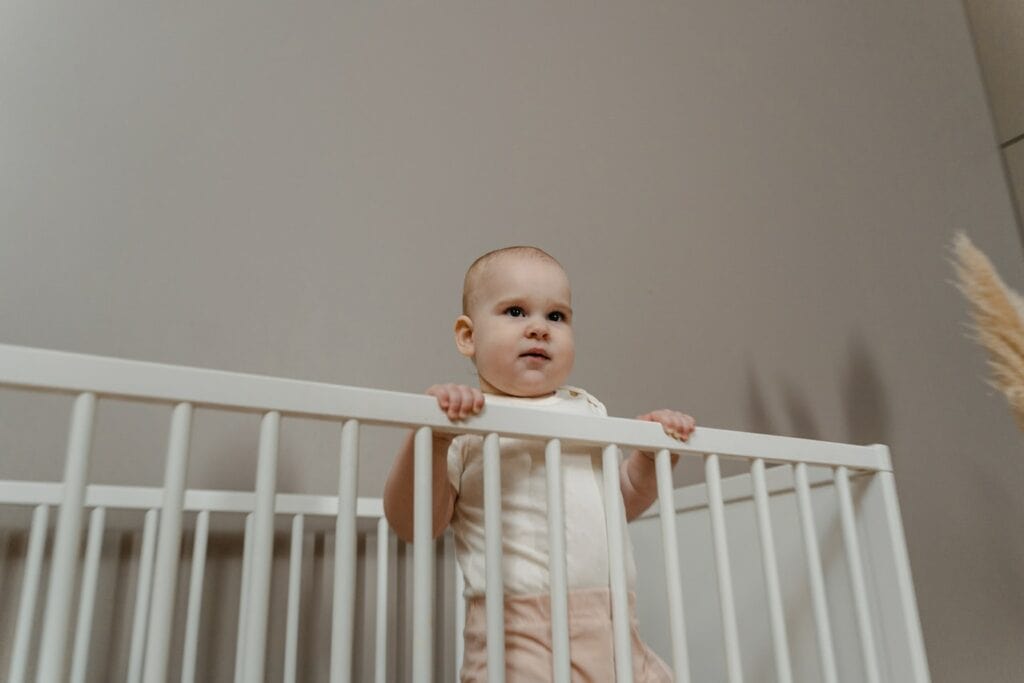
Firstly, it is important to ensure that the baby is safe and comfortable in their new sleeping arrangement. This may mean investing in a larger bassinet or a mini crib. Parents should also ensure that the sleeping area is free from any potential hazards, such as loose bedding or cords.
Another tip is to gradually transition the baby to their new sleeping arrangement. This can be done by starting with shorter naps in the new sleeping area and gradually increasing the length of time the baby spends there. This can help the baby become more comfortable with the new surroundings.
It is also important for parents to establish a consistent bedtime routine. This can include a bath, story time, and a lullaby. By establishing a routine, the baby will begin to associate these activities with sleep and may find it easier to fall asleep in their new sleeping arrangement.
Finally, parents should trust their instincts and be patient during the transition. It may take some time for the baby to become comfortable in their new sleeping arrangement, but with patience and consistency, the transition can be successful.
Overall, transitioning a baby from a bassinet to a crib can be a challenging time for parents, but by following these tips, parents can help ensure that their baby is safe and comfortable during this transition period.
Frequently Asked Questions
What are some alternatives to a crib for small spaces?
If a traditional crib is not an option due to space constraints, there are several alternatives that can be considered. A mini crib is a smaller version of a standard crib and is a good option for small spaces. A pack and play can also be used as a safe sleeping space for a baby. A co-sleeper or bedside bassinet is another option that allows the baby to sleep close to the parents.
What are some AAP approved bassinets for larger babies?
The American Academy of Pediatrics (AAP) recommends that parents choose a bassinet that meets safety standards and is appropriate for their baby’s size and weight. Some AAP approved bassinets for larger babies include the HALO Bassinest Swivel Sleeper, the Graco Dream Suite Bassinet, and the BabyBjorn Cradle.
What are the best bassinets for small spaces?
For small spaces, it is important to choose a bassinet that is compact and easy to move. Some of the best bassinets for small spaces include the Arm’s Reach Concepts Mini Ezee 2-in-1 Bedside Bassinet, the Fisher-Price Soothing Motions Bassinet, and the Delta Children Sweet Beginnings Bassinet.
When is it time to transition from a bassinet to a crib?
The time to transition from a bassinet to a crib varies for each baby, but it is typically around 4 to 6 months of age or when the baby starts to show signs of rolling over or pushing up. It is important to follow the manufacturer’s guidelines for weight and size limits and to make the transition when the baby is ready.
What should a baby sleep in when they are too big for a bassinet?
When a baby is too big for a bassinet, they should be transitioned to a crib. The crib should meet safety standards and have a firm, flat mattress with a fitted sheet. The baby should be placed on their back to sleep and should not have any loose bedding or soft objects in the crib.
How do I know when my baby has outgrown their bassinet?
It is important to follow the manufacturer’s guidelines for weight and size limits when using a bassinet. If the baby is starting to look cramped or is reaching the weight limit, it may be time to transition to a crib. Additionally, if the baby is starting to show signs of rolling over or pushing up, it may be time to make the transition.

Iesha is a loving mother of 2 beautiful children. She’s an active parent who enjoys indoor and outdoor adventures with her family. Her mission is to share practical and realistic parenting advice to help the parenting community becoming stronger.
